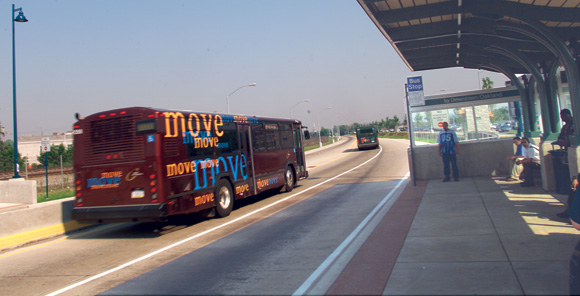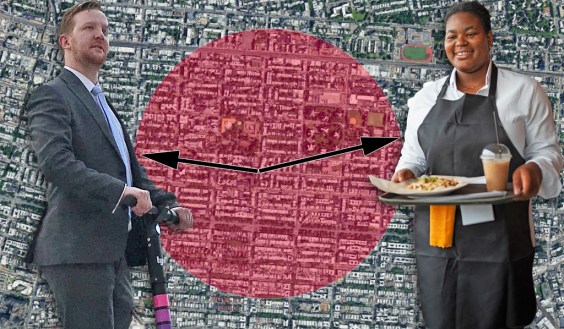Last month the Institute for Transportation and Development Policy released its report, "Recapturing Global Leadership in Bus Rapid Transit" [PDF], which proposed a LEED-like rating system for bus rapid transit projects and laid out a strategy for American cities to build systems as good as the world's best BRT. While more than 20 American bus projects have claimed the BRT mantle at various times, the ITDP report named just five American cities with bus corridors that made the grade and earned the title "True BRT." Streetsblog is pleased to publish a series of case studies from ITDP examining these innovative transit projects, starting with the country's first BRT routes, in Pittsburgh.
In recent years, Pittsburgh's reputation has been rejuvenated. The former industrial hub is becoming an innovative model for urban re-development, and an attractive place to live and work.
Pittsburgh's leadership on the urban sustainability front is not a recent phenomenon – in fact, it was the first city in the United States to implement elements of bus rapid transit, and it paved the way for more robust U.S. BRT systems.
In 1977, only three years after Curitiba, Brazil implemented the world’s first BRT system, Pittsburgh opened the South Busway, 4.3 miles of exclusive bus lanes, running though previously underserved areas of the city, from the western suburbs to the downtown. The city was concerned about worsening traffic congestion, and, lacking the funds to rehabilitate the city's streetcar lines, took inspiration from Curitiba and created the South Busway. Funding for the system came from U.S. DOT, the state of Pennsylvania and Allegheny County. The Port Authority of Allegheny County, a county-owned, state-funded agency, operates the system.
The success of the South Busway helped the city leverage funding for the expansion of the network, and in 1983, the Martin Luther King, Jr. East Busway opened. The East Busway began as a 6.8 mile network, with an additional 2.3 miles added in 2003, connecting the eastern suburbs with downtown. Fifteen bus routes run along its corridor. Its current weekday ridership is 25,600, with annual ridership close to 7 million.
The East Busway built on the success of its predecessor and offered fundamental BRT features including a dedicated busway, service as frequent as every two minutes during peak period, signal prioritization, and direct service operations (more on that soon). However, there is no off-board fare collection. Instead, passengers pay upon entrance for in-bound trips and upon exit for outbound trips, which helps reduce delays in service because of fare collection.
Pittsburgh is currently the only BRT system in the United States that operates a direct service model, meaning that local, limited and express services share the East Busway, accommodating a wide variety of transit needs. As the buses serving suburban routes enter the main corridors, they transfer onto the dedicated bus lanes via connection ramps, making transfer-free trips for passengers. The BRT buses can also exit the busway and use city streets to deliver passengers to destinations.
Today Pittsburgh is moving ahead with expansions and improvements to its BRT network. A new proposed route – downtown to Oakland – is a dense corridor packed with housing, employment centers, universities and businesses. All told, 110,000 people work along the route. The city’s transit agency estimates 68,000 riders a day will use the new route, or 24 percent of the Port Authority’s current total ridership.
In creating its existing busways, the Port Authority did not have to re-purpose car lanes for the BRT, an issue that has generated anti-BRT sentiment among residents in cities like Eugene and Los Angeles. Plans to re-purpose on-street lanes to grow the BRT system in Pittsburgh will almost certainly encounter similar resistance, but the public's familiarity with the East Busway and South Busway should help overcome such obstacles.
Stephanie Lotshaw is a program associate at ITDP. You can read more about the future of BRT in the United States at www.itdp.org.






